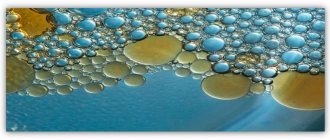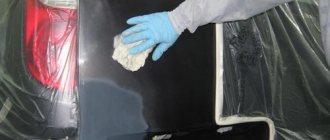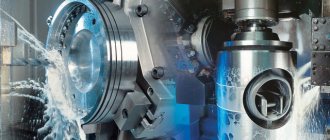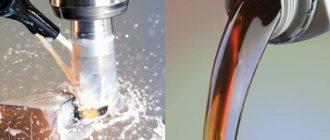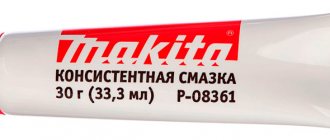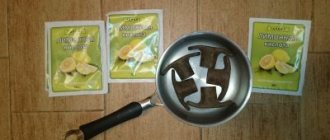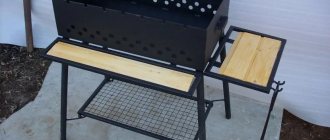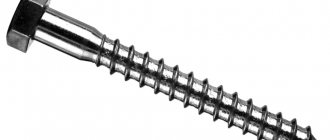TECHNOSOZH LLC is a fast-growing company that produces patented, high-tech coolants and release emulsols for formwork and concrete forms, with a developed production and dealer base.
Our mission is to raise cutting fluids and emulsols produced in Russia to a fundamentally new level, to fill the domestic market with high-quality, inexpensive and effective lubricants that are not inferior to Blaser Blasocut, Castrol, Mobil, Castrol, Fuchs, Houghton, etc.
The quality of TECHNOSOZH products is confirmed by the expert opinion of the Ministry of Defense of the Russian Federation. Sinapol coolant is produced jointly with the Institute of Organoelement Compounds of the Russian Academy of Sciences (Institute of Organoelement Compounds named after Nesmeyanov, Russian Academy of Sciences) to respond to the requests of any consumer.
What is coolant?
Cutting fluid or coolant for short is the general name of liquids intended for cooling and lubrication of working tools and workpieces when processing metal, alloys, plastics, stone and other materials. Cutting fluids are usually supplied ready-made or as a concentrate. Coolant concentrate allows you to obtain diluted coolant, the properties of which can be adjusted by changing the concentration.
Vegetable, mineral, synthetic oils, solutions of water-soluble monomers and polymers, soap emulsions, and emulsions based on mineral oils are most often used as the base of the cutting fluid. Typically, coolant consists of several components, each of which is responsible for certain properties of the finished product. The base of the cutting fluid provides the lubricating properties of the coolant. Water, if it is part of the coolant, ensures cooling of the tool and part. Special components give the coolant other necessary properties, such as bactericidal, anti-friction, stabilizing, anti-foam, anti-corrosion and others. Emulsion cutting fluid concentrates usually contain such an important component as an emulsifier. It allows you to create a stable oil-water emulsion that does not separate for a long time.
Most often, coolant is of the following types:
- oil coolants,
- semi-synthetic coolant,
- synthetic coolants.
The main component of oil coolants is mineral oil. Oil cutting fluids for metalworking have very good lubricating properties, but have a weak cooling effect.
Semi-synthetic cutting fluids are most often concentrates that, when diluted with water, form stable oil-in-water emulsions. Semi-synthetic cutting fluids in the form of an emulsion have good lubricating and cooling properties.
Synthetic cutting fluids contain organic synthesis products as a base. These cutting fluids do not contain mineral oils. The performance properties of synthetic cutting fluids depend on the component composition and form of application of the cutting fluid (usually in the form of an emulsion).
Cooking at home
How do you know if a homemade coolant is suitable for metalworking? Experts answer this question unequivocally: on an industrial scale - no. If you want to use a small amount for work in a home workshop, this is possible, but it is better to choose specialized products. The manufacturer is responsible for its quality and the final result that you will get if you follow the instructions exactly. If there are any quality complaints or operational issues, you can always solve them.
Where is coolant used? Coolant functions
During metal processing, a large amount of thermal energy is usually released. In this case, the workpiece and the processing tool can heat up to high temperatures, which negatively affect both the workpiece and the tool. The release of thermal energy leads to rapid overheating in the processing area, and as a result to wear and failure of the working tool and a decrease in the quality of the processed surface. The use of cutting fluids (coolants) helps reduce friction during metal processing, and, consequently, lower the temperature of the workpiece and tool.
Cutting fluid (coolant) is a liquid composition that is used when processing various materials, allowing to reduce the load and temperature effect on the tool and on the material being processed.
Coolant can be used in the process of turning, drilling, rolling, stamping, milling, cutting, abrasive processing of various metals, alloys, cast iron, non-ferrous metals, as well as various non-metallic materials.
The functions of coolant during operation are complex and varied. This is not only a lubrication and cooling function. These are also the functions of grinding and removing chips, reducing loads on tools and equipment, protecting equipment from corrosion, reducing the likelihood of scuffing and damage to the surfaces of workpieces and tools, increasing the speed of material processing, and others.
Lubricant for rollers of linear guides of machine tools - Divinol Lithogrease 00 / 000
NLGI-Grade (class) 00 and 000. Waterproof semi-synthetic oils with extreme pressure additives for operation under high pressure (EP, Extended Pressure) for lubrication of gears operating under high mechanical and temperature loads.
Ideal for lubrication of ball, roller and needle linear machine tool systems. Has the appropriate certificates and approvals. Divinol Lithogrease 000 has increased fluidity.
Operating temperature range from - 30 °C to + 140 °C. (Marking according to DIN 51 826: GP 00/000 N-30, according to ISO 6743-9: ISO-LXCDHB 00/000.)
Types and characteristics of coolant
The vast majority of cutting fluids (cutting fluids) are of the following types: oil-based cutting fluids and water-miscible cutting fluids.
Oil coolants are compounds whose main component is a base mineral (petroleum) oil. Most often, highly purified naphthenic or paraffin oils are used in the production of coolants. Their content in the coolant is 60–95%. In addition to oil, oil coolants may contain various additives (anti-friction, extreme pressure, anti-foam additives, corrosion inhibitors, antioxidants, etc.).
Oil coolants have very good lubricating properties, but have a weak cooling effect. In addition, the disadvantages of oil coolants include fire hazard, low thermal stability and high cost.
Water-miscible coolants are the most common type of coolants used in metalworking. Water-miscible cutting fluids are usually a concentrated cutting fluid that, when mixed with water, produces a composition that is directly used as a cutting fluid. Water-miscible coolants may contain mineral or vegetable oils, emulsifiers, alcohols, ethers, corrosion inhibitors, bactericides, anti-wear, extreme pressure and anti-foam additives, as well as other components. When the concentrate of a water-miscible cutting fluid is mixed with water, an emulsion or a true aqueous solution is formed, which is used as a cutting fluid when processing metals or other materials.
The advantages of water-miscible coolants are higher cooling capacity than oil coolants, relatively low cost, and fire safety. The disadvantages of such coolants include lower lubrication properties than oil coolants, a tendency to biodestruction, increased corrosion activity and insufficient stability of properties over time.
Horizontal milling and lathes have gravity to aid chip removal
Don't overlook the benefits of gravity for processing. On vertical cutters, gravity makes it difficult to remove chips from deep holes. On lathes and horizontal milling machines this is made easier by gravity. Kind of makes you wonder why no one has a machine that cuts from below. You'll need a pretty crazy operator to be able to drop the workpiece on the table and then turn it over for cutting. “Too far,” I thought, but then I discovered that such machines actually exist. They are called "inverted spindle lathes" and are a powerful alternative to bar feed lathes.
Here is a link to an article about them in MMSOnline.
Oil coolants
When processing metals, oil-based cutting fluids (coolants) are used in a number of operations. Oil coolants are multicomponent systems containing petroleum (mineral) oil as a base, the content of which ranges from 60 to 95%. The raw material for producing petroleum oil is petroleum.
In addition to base oil, oil coolants include combinations of additives for various functional purposes. Depending on the properties that the coolant should have, the composition of the oil cutting fluid may include anti-wear, extreme pressure, anti-friction, anti-corrosion, anti-oxidation, detergent, dispersant, anti-fog, anti-foam additives.
Antifriction additives. These include technical vegetable oils, fatty acids and their esters, as well as polymeric unsaturated fatty acids. Their content is usually 5-25%.
Extreme pressure additives prevent seizure and wear of cutting tools under the most severe thermal and mechanical loads. These are most often substances containing sulfur, chlorine, phosphorus. Depending on the conditions of use of oil coolants, the sulfur content in them can range from 0.5-3% to 20%. The most common of the chlorine-containing extreme pressure additives is chlorinated paraffins. Chlorine-containing additives in an amount of 3-15% are usually used when processing high-alloy steels, because Such additives increase the corrosiveness of oil coolants.
Anti-wear additives reduce cutting tool wear under increased load. Dialkyl phosphites and polymer fatty acids are used as such additives in coolant oils. Anti-wear additives are added to oil coolants in an amount of 0.5-5%.
Anti-corrosion additives - corrosion inhibitors can reduce the corrosive effect of oil coolants on manufactured parts and machine equipment. As such additives, metal dithiophosphates and dithiocarbonates, alkylphenol additives containing bound sulfide sulfur, benzotriazole derivatives, sulfur- and phosphorus-containing compounds are used. In some cases, quite effective corrosion inhibitors are additives used to improve the lubricating properties of coolants: polymeric unsaturated fatty acids, disulfides, aminophosphates.
Anti-foam additives are added to coolant to prevent foaming. Dimethylsiloxane polymers are most often used as such additives. They are introduced into the composition of oil coolants in an amount of 0.0005-0.001%.
Anti-fog additives reduce the formation of oil mist (aerosol) at high processing speeds. Polyolefins can be used as anti-fog additives in an amount of 0.5-3%.
The production of oil coolants involves mixing additives with base oil at temperatures that ensure their complete dissolution. Oil coolants do not mix with water and are supplied to consumers ready for use. Oil coolants have excellent lubricating properties, but mediocre cooling properties. They are used in processing modes that require increased lubrication properties and do not generate much heat.
Industrial gear oils - Divinol ICL series
Viscosity mm2/s/40 °C: ISO VG 32 – ISO VG 680
Industrial high-pressure gear oils CLP complying with DIN 51 517 part 3, with additives that reduce wear and friction. Meets AISE 224, AGMA 9005-E02 and David Brown S1.53.101 (E).
Used in heavy-duty industrial gearboxes with circulation lubrication, for oil-immersed gears with spur and bevel gears and for worm gears. (Marking according to ISO 6743-6: L-CKC, CKD)
Water-miscible cutting fluids. Synthetic and semi-synthetic coolants.
1. What is semi-synthetic coolant?
2. What is synthetic coolant
1. Water-miscible semi-synthetic coolants.
Concentrates of water-miscible cutting fluids (cutting fluids) have become widespread in metal processing processes. This class of cutting fluids also includes water-soluble cutting fluids. Strictly speaking, it is sometimes difficult to draw the line between the two types of cutting fluids, but if you delve into the essence of the process of mixing concentrates of these cutting fluids with water, the difference is not difficult to understand.
Water-miscible (water-soluble) coolants are coolants whose concentrates, when mixed with water, form physical mixtures of different dispersities (primarily various emulsions).
When mixed with water, water-soluble cutting fluids form true solutions. Concentrates of such coolants contain water-soluble components and do not contain mineral oils, which are not soluble in water.
Water-miscible cutting fluid concentrates usually contain mineral oils, emulsifiers and functional additives. Concentrates of water-miscible cutting fluids containing 50–75% mineral oil form milky-white coarse emulsions when mixed with water. Such concentrates are called emulsols.
Concentrates of water-miscible cutting fluids containing 10–50% mineral oil usually form translucent stable microemulsions when mixed with water. Such coolant concentrates are often called “semi-synthetic”.
The stability and performance characteristics of coolant oil emulsions obtained after diluting the concentrate with water depend on the mineral oil content and the various components included in the coolant concentrate.
2. Synthetic coolants.
Synthetic cutting fluids include cutting fluid concentrates that do not contain mineral oil in their composition. The basic components of synthetic cutting fluids are most often synthesized or chemically treated products. Concentrates may contain various components, including emulsifiers and various additives.
The range of synthetic coolants is varied. Synthetic cutting fluid concentrates, when diluted with water, can form both microemulsions and aqueous solutions, which are used in metalworking as a cutting fluid.
Classification of water-miscible coolants
Concentrates of water-miscible cutting fluids (cutting fluids) have become widespread in metalworking processes. This class of cutting fluids also includes water-soluble cutting fluids. Such cutting fluids are supplied in the form of a concentrate, from which a working emulsion or solution of the required concentration is prepared directly at the point of use. In this case, a prerequisite for obtaining a stable emulsion is the correct dilution of the concentrate with water - it is added to the water and mixed thoroughly.
Water-miscible cutting fluids are coolant fluids whose concentrates, when mixed with water, form physical mixtures (emulsions) of different dispersion: coarse, medium-dispersed emulsions and microemulsions.
Most often, water-miscible cutting fluids contain mineral oil as a base, as well as emulsifiers, stabilizers and various additives that improve the characteristics of working emulsions. Water-miscible coolants include:
1. Emulsols. They contain 50–75% mineral oil. When such concentrates are mixed with water, coarse milky-white emulsions are formed. Such emulsions are characterized by reduced stability, but have high lubricating characteristics.
2. Semi-synthetic coolants. These include concentrates of water-miscible cutting fluids containing 10–50% mineral oil. When mixed with water, such coolant concentrates form translucent, stable emulsions or microemulsions with good lubricating and cooling properties.
3. Synthetic coolants. Synthetic cutting fluids include cutting fluid concentrates that do not contain mineral oil in their composition. The basic components of synthetic cutting fluids are most often various surfactants (surfactants), fatty alcohols, ethers, water-soluble polymers and other synthesized products. Synthetic cutting fluid concentrates, when diluted with water, can form both microemulsions and aqueous solutions, which are used in metalworking as a cutting fluid.
The difference between synthetic and semi-synthetic coolant
Synthetic cutting fluids include cutting fluid concentrates that do not contain mineral oil in their composition. The basic components of synthetic cutting fluids are most often synthesized or chemically treated products. Concentrates may contain various components, including emulsifiers, various additives and additives.
Concentrates of water-miscible cutting fluids containing 10–50% mineral oil usually form translucent stable microemulsions when mixed with water. Such coolant concentrates are often called “semi-synthetic”.
Semi-synthetic coolants are widely used in metalworking production. They have good lubricating and high cooling properties. The main disadvantages of semi-synthetic cutting fluids include insufficient emulsion stability, insufficient biostability, reduced environmental friendliness of the composition, and high disposal costs.
Unlike semi-synthetic ones, synthetic coolants do not contain mineral oil. Each synthetic composition may have its own specific base component. This is the main difference between synthetic and semi-synthetic coolants. The basic components of synthetic coolants can have different properties, and this determines the basic properties of working coolants obtained from such concentrates. Synthetic coolants, unlike semi-synthetic ones, have increased biostability and easier disposal of used compounds. Synthetic cutting fluids typically have high stability and a wide range of operating capabilities.
Hydraulic oils - Divinol DHG and DHG-ZF series
- Viscosity mm2/s/40 °C: ISO VG 10 – ISO VG 150
- Viscosity mm2/s/40 °C: ISO VG 10 - ISO VG 68
Hydraulic and transmission oils HLP-D (according to German classification) with detergent and dispersant properties. These hydraulic oils exceed the requirements of DIN 51 524 part 2. The Divinol DHG-ZF series is zinc-free and meets the DBL 6721 specification.
Preferably used in metalworking machines when working with emulsions. (Marking according to ISO 6743-4: L-HM)
Classification of water-soluble cutting fluids
Water-miscible emulsols are supplied in the form of a concentrate, which is used to prepare working emulsions directly at the point of use. In this case, a prerequisite for obtaining a high-quality product is the correct dilution of the concentrate with water - it is added to the water and mixed thoroughly.
This group includes three main types of coolant with different dispersion of the main component:
- Emulsion: coarse products obtained by diluting emulsols containing up to 85% mineral oils with water. By mixing emulsol and water at a concentration of 5-30%, a white emulsion is formed with high lubricating characteristics.
- Semi-synthetic: concentrated products with a colloidal degree of dispersion, containing up to 50% mineral oils. A working translucent solution with a concentration of 1-10% is obtained by mixing with water. It is equally characterized by good lubricating and cooling properties.
- Synthetic: oil-free concentrates have a molecular degree of dispersion. Main components: surfactants (surfactants), water, water-soluble polymers and additives. The working solution at a concentration of 1-10% has high cooling properties.
GOSTs and specifications for cutting fluids
The production of coolant is a complex technological process.
All cutting fluids (coolants), both concentrates and ready-made emulsions, are manufactured in accordance with technical documentation, which may include GOSTs, TU, Certificate of Conformity and other documents.
State standards (GOST) describe technical requirements common to the entire coolant production industry, such as general technical requirements, coolant testing methods, etc.
Typically, cutting fluids are produced by manufacturers according to technical specifications (TS), which are developed by the coolant manufacturer specifically for each composition. Specifications for cutting fluid contain a general description of the coolant, physical and chemical properties of the composition or properties of the concentrate and emulsion, storage and transportation conditions for the coolant, safety and environmental requirements, testing methods for the coolant and other information necessary for consumers.
How to choose coolant for milling?
- when using cutters with carbide inserts, they must combine high lubricating and low cooling properties (milling is an intermittent process, so intensive cooling of the cutting zone leads to the formation of thermal cracks on the cutting edges of the tool due to sudden temperature changes);
- When processing parts made of aluminum and stainless steel, it is necessary to use coolant with anti-seize additives to improve the quality of surface treatment.
Coolant for metal forming
The selection of coolants for metal forming is carried out taking into account the characteristics of the technological modes of the processes being performed (pressing, hot or cold stamping).
Generally, fire-resistant water-based cutting fluids with and without graphite, as well as oil-based coolants with graphite, are used for hot stamping operations. These products form a heat-resistant lubricating film with good release properties. They reduce equipment wear by preventing hard contact between the die and the workpiece.
A special evaporating oil for stamping, which contains special polar additives (esters), is also widely used. It is characterized by low viscosity, is easily applied to work surfaces, evaporates when heated and does not require subsequent cleaning.
For cold forming of metals, oil-based coolants are produced with a significant content of various additives and lubricating additives that impart the desired performance properties - corrosion resistance and wear resistance, good extreme pressure qualities. The protective oil film created reduces friction, reduces defects and improves the surface quality of the resulting part.
Lubricant for sliding and rolling guides - Divinol T EP series
Viscosity mm2/s/40 °C: ISO VG 32, 68, 100, 220
High-performance lubricants with high demulsibility (CGLP in accordance with DIN 51 502, ISO 6743-13: LG) for the lubrication of sliding and rolling guides, preferably in machines operating with emulsions.
Also ideal for guides made of polymer materials. Special additives reduce friction forces during startup and prevent abrupt feed of the working element at low speeds.
An optimally selected set of additives in combination with Zubora brand lubricants almost completely prevents the appearance of black spots.
